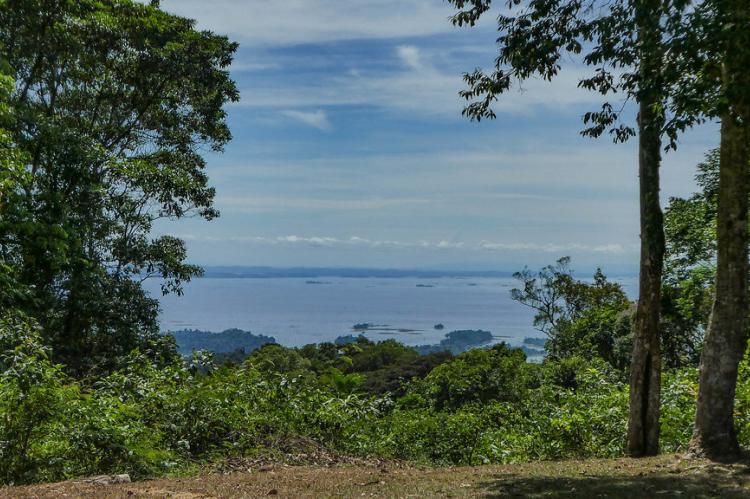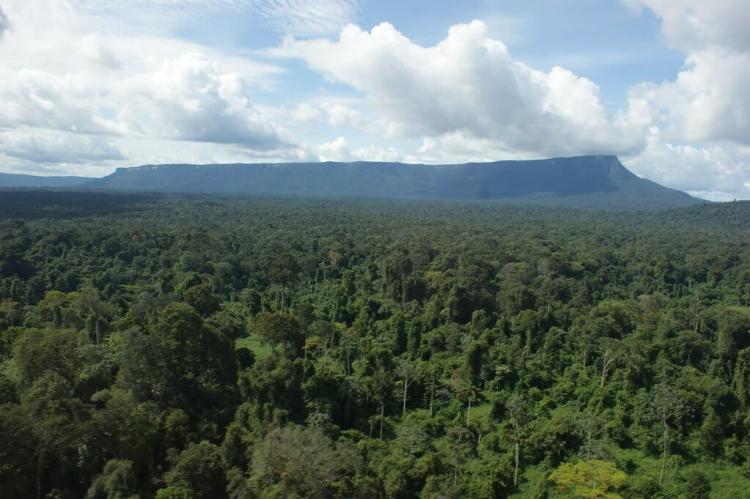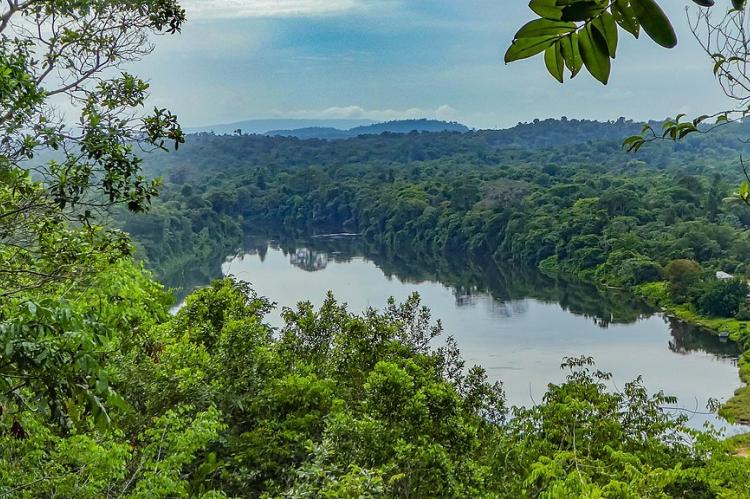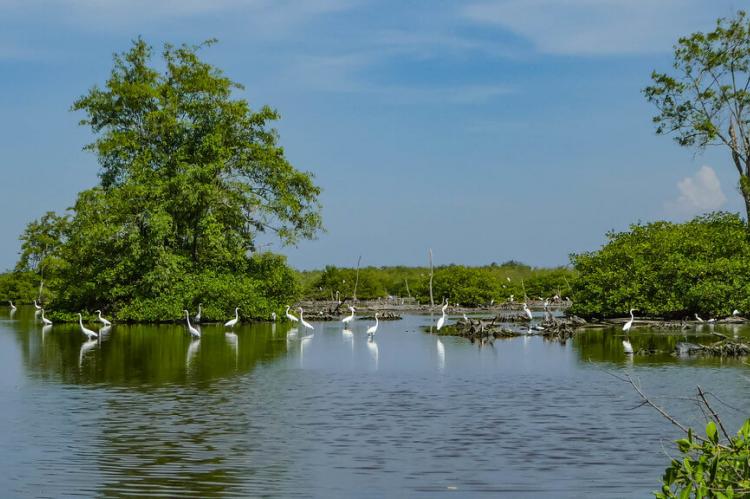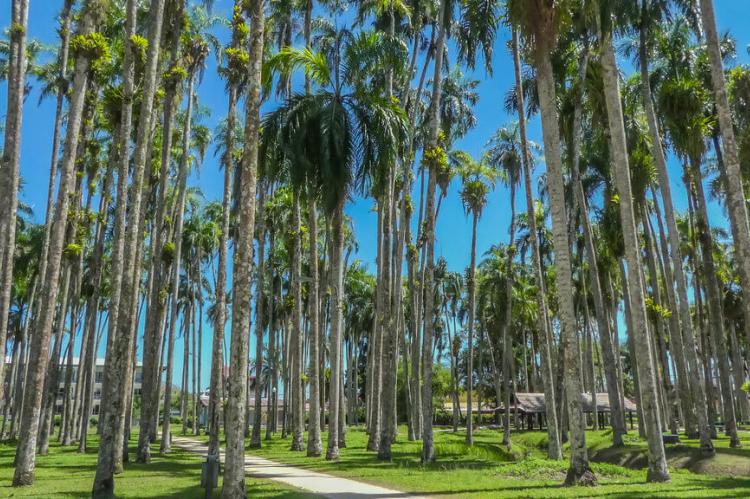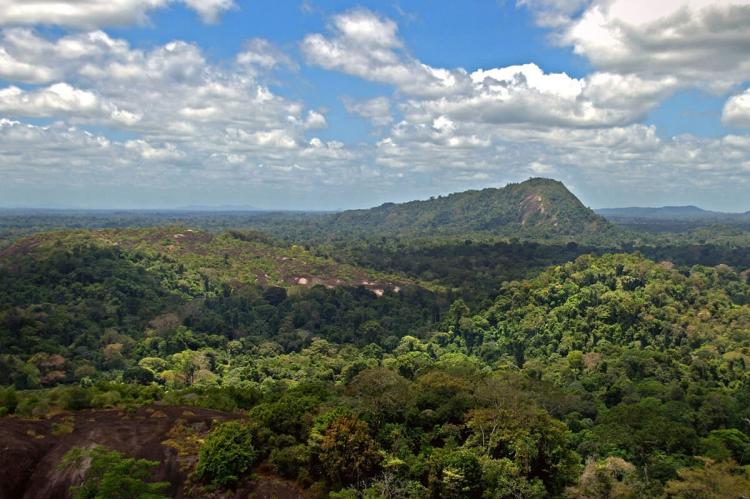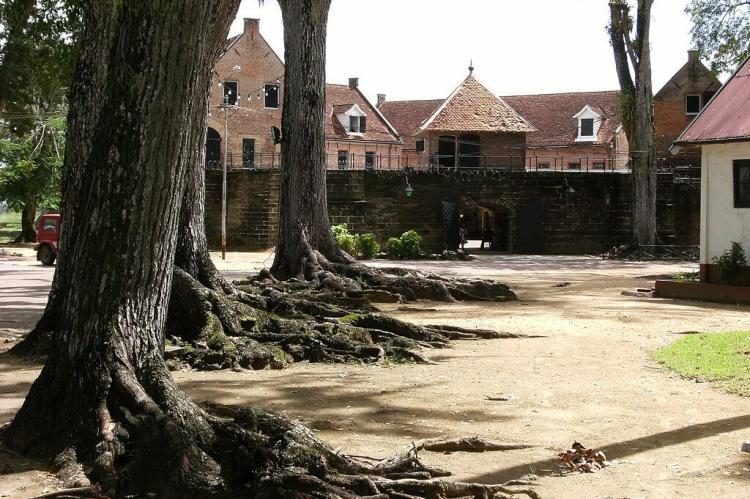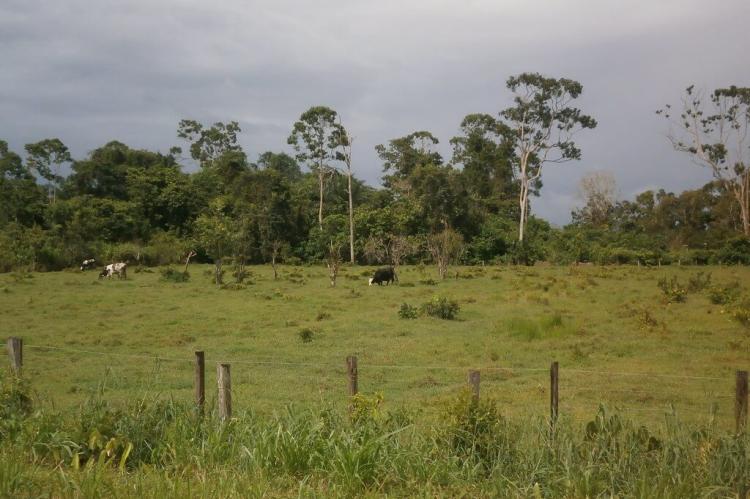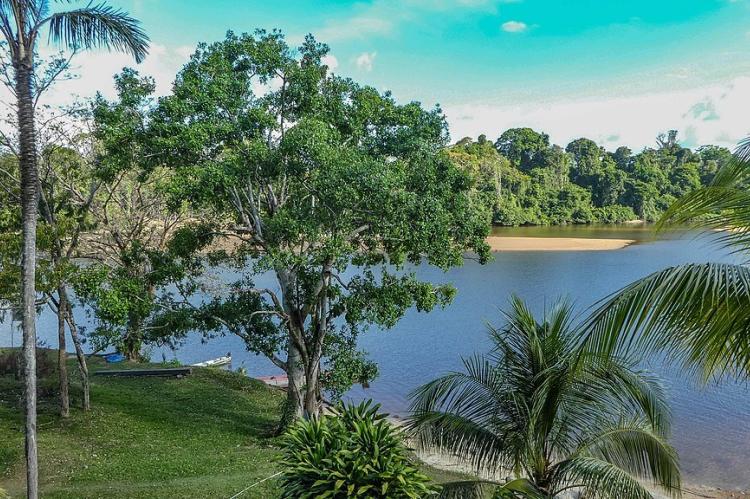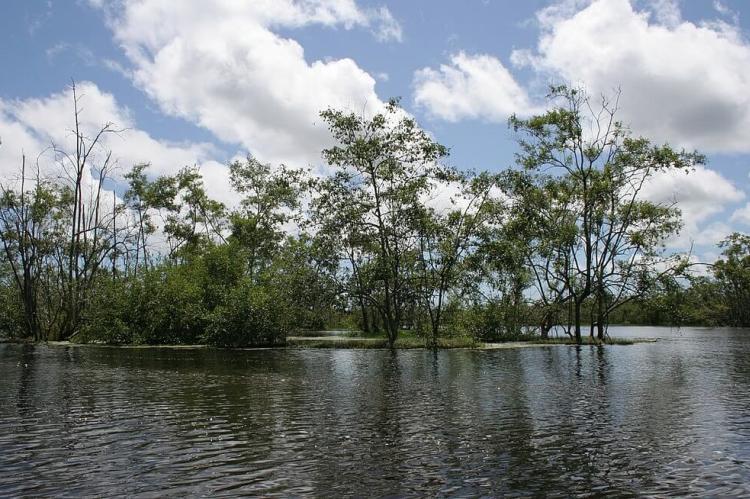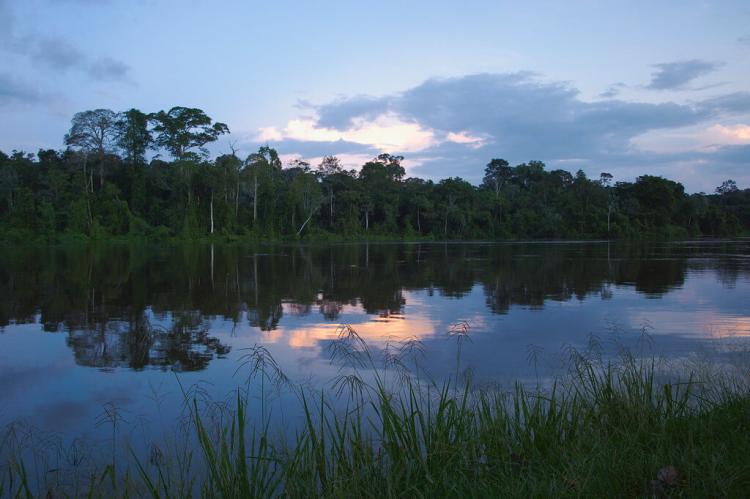Suriname: Natural Landscape
Suriname is located on the northeastern Atlantic coast of South America and is its smallest sovereign state. The geography of Suriname consists of rainforests, savanna, and coastal swamps. Its forest cover is approximately 90%, the highest of any nation worldwide.
The Natural Landscape of Suriname
Suriname, a sovereign state on the South American continent's northeastern Atlantic coast, shares borders with Guyana to the west, French Guiana to the east, and Brazil to the south. The country's coastal expanse along the Atlantic Ocean spans approximately 386 kilometers (239 miles).
Encompassing an area of just under 165,000 square kilometers (64,000 square miles), Suriname ranks as South America's smallest sovereign state. Predominantly characterized by tropical rainforests, the nation's topography contributes to its ecological diversity.
Formerly known as "Dutch Guiana," Suriname is an integral component of the geographical and historical collective referred to as "The Guianas," alongside Guyana and French Guiana. This shared vocabulary reflects a historical and cultural kinship embedded in the region.
Geopolitically, Suriname is affiliated with the "Caribbean South America" subregion alongside Colombia, Venezuela, Guyana, and French Guiana. This designation, bestowed by the United Nations, grants these nations access to a specific area of the Caribbean Sea.
Contrastingly, the linguistic profile of Suriname introduces a distinctive facet to its identity. Despite its geographical location in South America, the nation's official language is Dutch, contributing to a nuanced classification within the Latin American context.
The capital city, Paramaribo, is the primary urban center, accommodating nearly half of the nation's population and representing the epicenter of administrative and cultural activities. Municipalities within the capital's metropolitan ambit or along the densely populated coastline form integral components of Suriname's spatial and demographic landscape.
Biodiversity
Suriname, strategically positioned on the northeastern Atlantic coast of South America, emerges as a global biodiversity hotspot. According to the Global Biodiversity Index, Suriname holds the 42nd position worldwide, offering a sanctuary for an impressive array of flora and fauna. The nation's diverse ecosystems sustain a remarkable tapestry of life, including approximately 696 bird species, 114 amphibian species, 1,046 fish species, 207 mammal species, 156 reptile species, and a staggering 5,100 vascular plant species.
The biodiversity wealth of Suriname is intricately woven into its expansive forest cover, which spans approximately 15 million hectares (37 million acres). This vast expanse of lush greenery accounts for around 90% of the country's total land area, representing the highest percentage of forest cover of any nation globally. The significance of this extensive forested landscape extends beyond its sheer scale, as it plays a pivotal role in maintaining ecological balance, providing critical habitat for diverse species, and contributing to the global carbon sequestration effort.
Conservation
Conservation efforts in Suriname are integral to the nation's commitment to preserving its unparalleled biodiversity and safeguarding its vital ecosystems. The government has implemented various measures, including protecting areas like nature reserves and wildlife sanctuaries. These areas serve as havens for endemic and endangered species, allowing for the uninterrupted continuation of their natural life cycles.
Noteworthy conservation initiatives include the Central Suriname Nature Reserve, a UNESCO World Heritage Site covering approximately 1.6 million hectares, and the Brownsberg Nature Park, renowned for its rich biodiversity and captivating landscapes. These areas are vital for the conservation of unique species and provide opportunities for sustainable eco-tourism, promoting environmental awareness and fostering a harmonious relationship between nature and human activities.
Despite the commendable strides in conservation, Suriname faces challenges such as illegal logging, habitat degradation, and potential impacts from climate change. The delicate balance between development and preservation is an ongoing consideration for the nation, and sustainable practices are continually being sought to ensure the long-term health of Suriname's ecosystems.
Climate
Suriname, characterized by its tropical climate, experiences relatively consistent temperatures throughout the year. The equatorial nature of its climate ensures that the thermal variations remain moderate. Despite this overall stability, the country observes two distinct wet seasons, producing distinct weather patterns.
The primary wet season extends from December to early February, bringing a heightened rainfall level to various Suriname regions. During this period, the tropical downpours contribute to lush vegetation and maintain the ecological balance of the diverse ecosystems that thrive within the nation's borders.
The second wet season occurs from late April to mid-August, marking another phase of increased precipitation. This period, characterized by tropical rainstorms, is crucial in sustaining Suriname's vast rainforests, which are integral to the nation's biodiversity. In addition to the wet seasons, the remaining months experience a relatively drier climate, offering a respite from the intense rainfall.
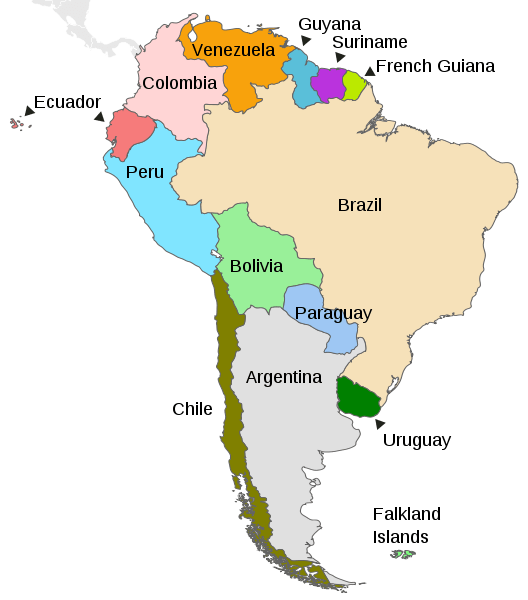
Map depicting the countries on the continent of South America
Natural Geography of Suriname
Geographic Regions
The natural landscape of Suriname consists of rainforests, savanna, coastal swamps, and the two main mountain ranges: the Bakhuis and Van Asch Van Wijck Mountains. The country is situated on the Guiana Shield, one of the three cratons of the South American Plate. It can be divided into three main geographic regions:
-
North: Lowland Coastal Plain
-
Interior and South: Tropical Rainforest and Savanna
-
Far South: Highlands
Northern: Coastal Plain
The coastal plain is flat and sometimes as much as 1.5 m (5 ft) below sea level, necessitating a system of sea defenses. In addition, the soils of the coastal plain are relatively fertile. The narrow coastal zone, approximately 386 km (239 mi) in width, consists of sandbanks and mudbanks. This sediment was deposited by the southern equatorial currents from the area surrounding the mouth of the Amazon River, located on the Brazilian coast to the south.
Further inland and south of the mudbanks, the "New Coastal Plain" begins, which was also formed from sand and clay from the mouth of the Amazon. This region consists of clay swampland in which peat has developed and is traversed by sandy ridges that run parallel to the coast. South of the New Coastal Plain is the "Old Coastal Plain," which consists primarily of fine clays and sands. This Old Coastal Plain contains a variety of topographies, including old ridges, clay flats, and swamps.
-
Paramaribo: the capital city and surrounding areas are home to almost half the country's population.
-
West Coast: known for its birdlife, Bigi Pan Nature Reserve, and a few towns.
-
East Coast: home to former colonial plantations and sea turtle nesting beaches.
Interior: Rainforest and Savanna
The interior rainforest region covers the central and southern parts of Suriname. It is part of the vast Amazon Rainforest, characterized by dense tropical rainforests, rich biodiversity, and numerous rivers and creeks. Within the interior rainforest region are areas of savannas characterized by grasslands and scattered trees. The savannas contrast the dense rainforests and provide essential grazing areas for wildlife and cattle. This region is sparsely populated, with indigenous communities and small settlements scattered throughout the rainforest.
The interior rainforest is of significant ecological importance and is home to various plant and animal species, including jaguars, monkeys, and rare bird species. In the upper Coppename River watershed, the Central Suriname Nature Reserve is a UNESCO World Heritage Site, cited for its unspoiled rainforest biodiversity.
Southern: Guiana Highlands
Even farther to the south, bordering Brazil is an area consisting mainly of a central mountain range along with its branches and scattered hilly regions. A vast tropical rainforest covers these highlands. The Guiana Highlands form a part of the larger Guiana Shield, a geological formation that extends across several South American countries.
The Guiana Highlands are characterized by rugged mountains, tepuis (tabletop mountains), and plateaus. Some of the notable tepuis in this region include Tafelberg and Voltzberg. The highlands have unique ecosystems and mineral resources, attracting scientific and mining interests. In the southwest, near the Brazilian border, lies the Sipaliwini Plain, another savanna.
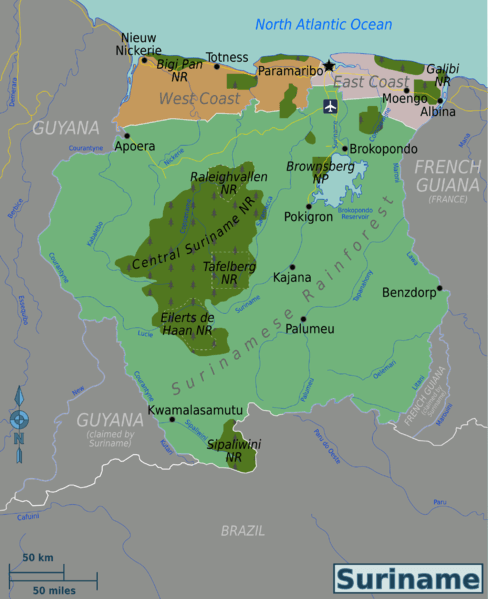
Map illustrating the regions of Suriname
Landforms
Low-lying coastal plains and dense rainforests primarily characterize Suriname's terrain and lack extensive mountain ranges. However, some notable highlands and isolated mountains exist, particularly within the larger Guiana Highlands.
The main mountain ranges in Suriname include:
-
Wilhelmina Mountains: The Wilhelmina Mountains, also known as the Wilhelminagebergte, are located in the southern part of Suriname within the Sipaliwini District. This mountain range is part of the more extensive Guiana Highlands, which extend across several South American countries. The Wilhelmina Mountains are home to Suriname's highest peak, Juliana Top (Juliana Peak), reaching an elevation of approximately 1,280 m (4,200 ft) above sea level. The range is known for its biodiversity, with various plant and animal species in its rainforests.
-
Kasikasima Range: The Kasikasima Range is in southern Suriname, specifically within the Tumuk Humak Mountains. Mount Kasikasima, one of the tallest peaks in the country, is part of this range, standing at an elevation of about 718 m (2,356 ft) above sea level. The remote area is home to indigenous communities, making it an important cultural and ecological region.
-
Tafelberg Range: The Tafelberg Range is not an extensive mountain range but a notable tepui (tabletop mountain) in central Suriname. Tafelberg, also known as Table Mountain, is one of the most recognizable tepuis in the country. It is approximately 1,026 m (3,366 ft) above sea level and features a flat tabletop summit, typical of tepuis. Tafelberg is in a pristine rainforest area and offers unique hiking and exploration opportunities.
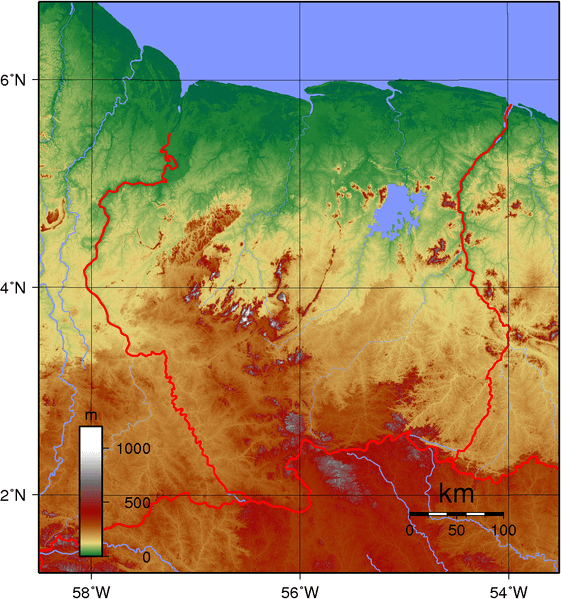
Map depicting the topography of Suriname
Bodies of Water
Many of Suriname's water bodies are ecologically significant, providing habitats for various plant and animal species. Wetlands, mangroves, and riverine ecosystems support multiple forms of aquatic life. Suriname is characterized by several significant rivers that play crucial roles in its geography and development. Many rivers are used as natural transportation routes, supporting trade and connecting remote communities with urban centers. The country has a relatively short coastline along the Atlantic Ocean. It features several coastal lagoons, estuaries, and wetlands.
See more: Water Bodies of Suriname
Islands
Suriname has a few islands, although mostly small and uninhabited. The largest island in Suriname is Bigi Speight Island, located in the Atlantic Ocean, about 15 km (9 mi) off the coast. It has an uninhabited area of about four sq km (1.5 sq mi). The island is primarily covered in mangroves and is a popular nesting ground for seabirds.
Other islands off the coast of Suriname include:
- Klein Speight Island
- Long Island
- Goat Island
- Rabbit Island
These islands are also uninhabited and are mainly used for fishing and recreation.
Administrative Divisions
Suriname is divided into ten administrative districts: the two urban districts of Paramaribo (the capital) and Wanica, six rural districts in the coastal area, and two in the interior.
See more: Cultural Landscape of Suriname
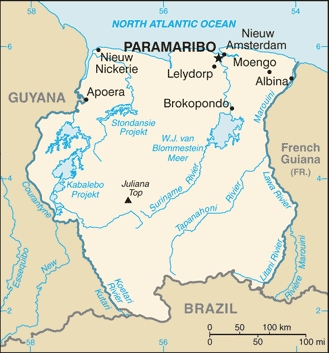
CIA Map of Suriname
Natural Regions
Ecological Regions
Suriname is situated in the Neotropical realm. Ecoregions are classified by biome type - the major global plant communities determined by rainfall and climate. In addition, the country contains six terrestrial ecoregions.
Tropical and subtropical moist broadleaf forests:
-
Paramaribo swamp forests
Tropical and subtropical grasslands, savannas, and shrublands:
Mangroves:
-
Guianan mangroves
